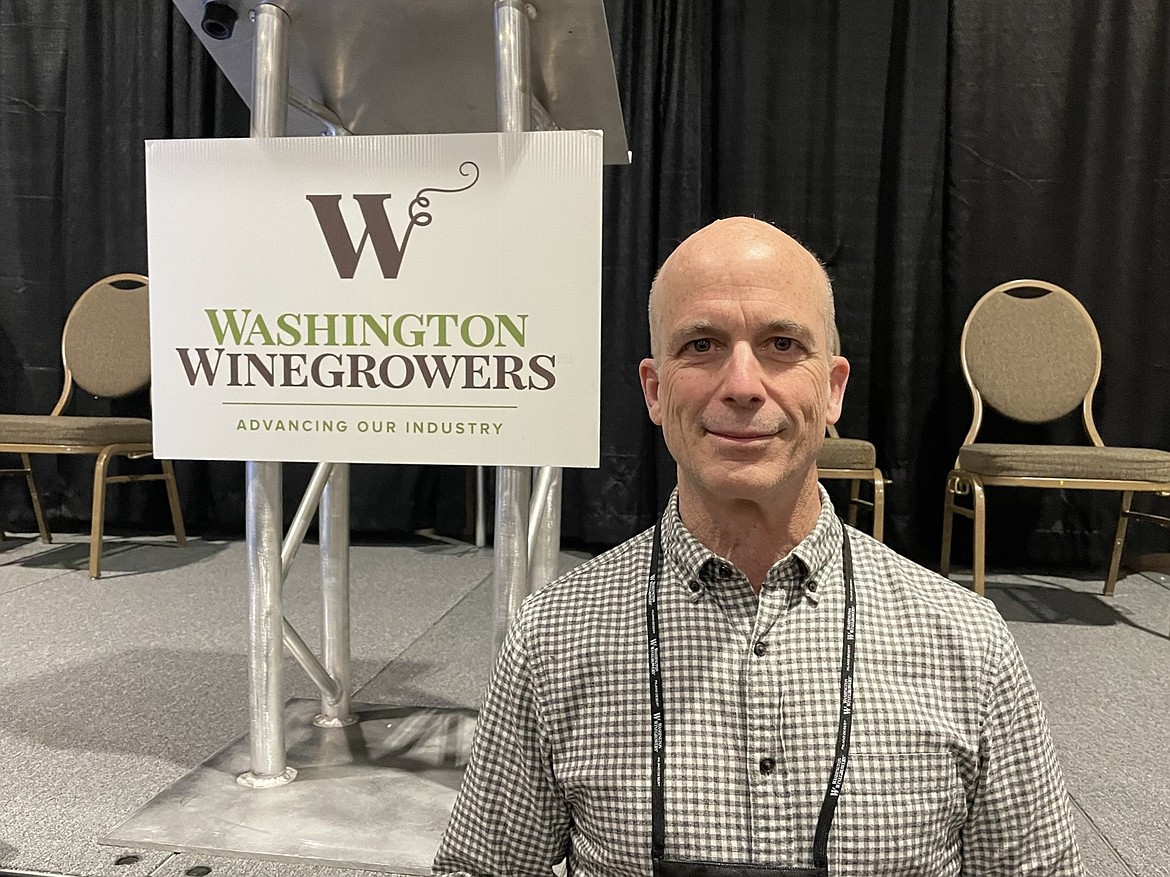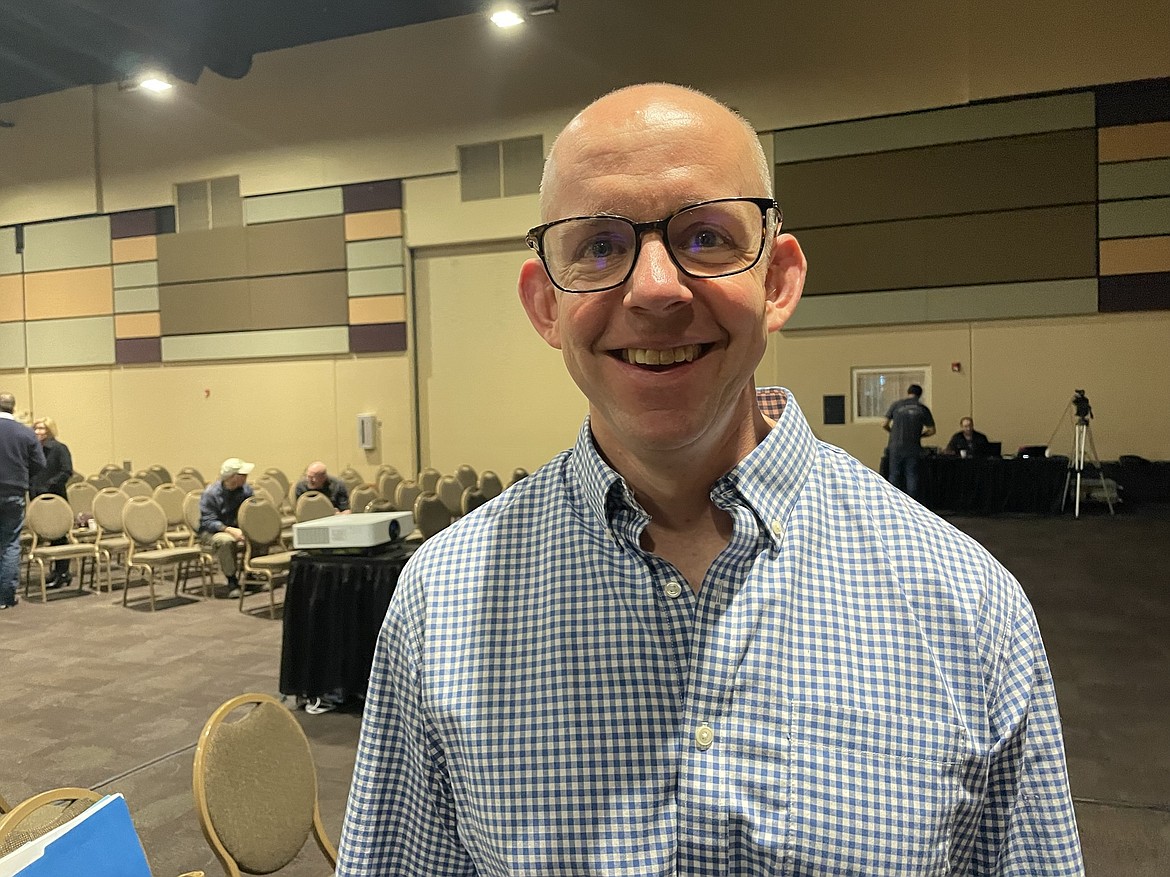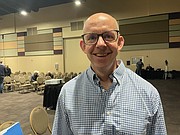Wine and demand: Production increases while worldwide consumption decreases
KENNEWICK — There’s more wine out there than there are people drinking it, according to Christian Miller, a wine marketing specialist and researcher with California-based Full Glass Research.
“There’s a substantial deficit in consumption versus production, and all that wine has to go somewhere,” Miller told attendees on Feb. 9, the final day of WineVit, the annual conference sponsored by the Washington Wine Growers Association.
According to figures Miller cited during his presentation about the state of winemaking in 2022, of the world’s major wine-making nations, only Americans drank more wine than they produced, sipping and quaffing 3.3 billion liters of wine in 2020 while U.S. vintners and wineries made 2.3 billion liters. Most other major wine-producing nations like France, Italy and Spain, produced significantly more wine than their residents could drink.
Other major wine-drinking nations — the UK and Germany — made up for some of the slack, but wine consumption in China, which many had hoped would become the world’s next big market, has started declining, Miller said.
“So we don’t know exactly what that’s going to do,” he explained.
About 80% of all wine drunk in the United States is consumed by 44 million core consumers, who have their choice of more than 120,000 domestic and imported wine labels and wine from nearly 12,000 vineyards across the U.S.
“It’s a very crowded market and it will be for a long time,” Miller said.
Grant County is home to four federally-recognized wine-producing regions — Ancient Lakes in and around Quincy, Royal Slope, Wahluke Slope and the Columbia Basin — known as American Viticultural Areas. The AVAs are overseen by the U.S. Treasury Department’s Bureau of Alcohol and Tobacco Tax and Trade and are designed to recognize the very special growing conditions in a region that contributes to a wine’s unique qualities.
The Columbia Basin AVA also includes a portion of Adams County.
Miller said wine sales have declined 7% across the U.S. since 2017. While there was a temporary uptick in wine sales — especially direct-to-consumer sales — during the COVID-19 lockdowns in 2020, wine has since lost market share to spirits, ready-to-drink cocktails, beer and other alcoholic beverages. Currently, in-store wine sales are only at 87% of their pre-pandemic levels, while spirits sales have reached 94% and beer sales 90%, he said.
Miller said it doesn’t help that wine drinkers are older — the largest group of core wine drinkers is over 70 — and that many younger people, particularly those in their 20s and 30s, prefer other kinds of alcoholic beverages to wine. Data gathered in surveys conducted by marketing and research firms show younger drinkers like to socialize when they drink, and don’t associate wine with socializing, Miller said.
“There’s been a lot of talk about whether young people will adopt wine like the Boomers did,” he said. “This situation is less dire than a lot of the headlines and quick takes would have you believe, but it’s not rosy.”
However, there are a few bright patches for Washington winemakers, Miller said. While sales are falling for relatively inexpensive wine – wine under $15 per 750-milliliter bottle — sales of expensive wines, especially wines above $50 per bottle, are still rising, though they make up a tiny share of the market. Miller noted the price of an average bottle of Washington wine was $10.83 in 2022, while California wine averaged $8.38, though he added that the sheer volume of production in California means the state dominates in the production of lower-priced wine.
Miller also noted one survey which suggested people were willing to pay more for certified organic wines or wines produced using industry-approved sustainable methods, and would consider $15 per bottle to be a bargain for a bottle of organic wine.
“That’s one experiment,” Miller said. “But it was qualitatively large and well-controlled, so I believe it will hold up.”
Adam Schulz, a former opera singer turned wine broker and owner of Incredible Bulk Wine Co. in Richland, said even with overproduction, the ongoing drought in much of California meant that that state’s wine harvest has fallen short in the last few years. With ample water from both the Yakima and Columbia Basin federal water projects, Schulz said, Washington wine producers are well-positioned to take advantage of the situation.
“If there’s a trend to follow, we have wine to follow,” he said. “We have drinkers that might be looking. Let’s say their favorite California cabernet came off the shelf a little earlier in the season than they wanted to. Those are the kind of opportunities that we can follow to capture because we’ve got a great quality harvest.”
Charles H. Featherstone can be reached at cfeatherstone@columbiabasinherald.com.




